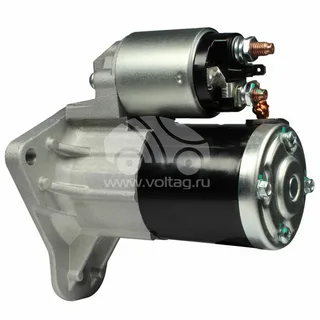The Hyundai i30 passenger window switch is a crucial component for ensuring convenience and comfort within the vehicle. Understanding its features and maintenance can enhance the overall driving experience, making it essential for drivers to be well-informed. This blog delves into the functionalities, common issues, and tips for maintaining the window switch, providing valuable insights for Hyundai i30 owners.
Understanding the Hyundai i-30 passenger window switch
The Hyundai i-30 passenger window switch plays a vital role in the vehicle’s power window system, allowing passengers to operate their windows independently. Strategically placed on the door panel, this switch ensures ease of access and usability, significantly contributing to passenger comfort. The design typically includes up-and-down buttons that control the movement of the window.
When pressed, these buttons send an electrical signal to the window motor, prompting the window to either ascend or descend. This seamless operation is facilitated by an intricate electrical system that requires regular maintenance to function optimally.
Additionally, the passenger window switch often incorporates safety features such as child lock options to prevent unintended use by younger passengers. Understanding the functionality and layout of the Hyundai i-30 passenger window switch can help drivers appreciate its role in enhancing the vehicle’s overall usability.
How to Identify a Faulty Window Switch?
Identifying a faulty Hyundai i-30 passenger window switch requires attentiveness to the switch’s behaviour and the window’s response. Symptoms of a malfunctioning switch often include buttons that do not respond when pressed, inconsistent window movement, or complete non-operation of the window. Sometimes, the window may move sporadically or become stuck in either the open or closed position. Additionally, unusual noises such as clicking or grinding when attempting to operate the window can indicate an issue with the switch.
Physical inspection may reveal visible signs of damage, such as worn-out buttons or loose connections. Early recognition of these indicators can prompt timely intervention, preventing more extensive damage to the vehicle’s electrical system. If any of these symptoms are observed, seeking professional assistance or considering a DIY replacement is advisable if one possesses the necessary skills and tools.
Features and Specifications Of i30 Single Window Switch
The i30 Single Window Switch several features and specifications to enhance user experience and vehicle functionality.
Design and Placement
The switch is ergonomically positioned on the door panel for easy access and intuitive use. Its layout typically includes distinct up-and-down buttons that facilitate seamless window operation.
Electrical System Integration
This component is integral to the car’s electrical system, interfacing with the window motor to execute commands. Proper integration ensures reliable performance and quick response times.
Material Quality
The switch is Crafted from durable materials and designed to withstand frequent use without degrading. High-quality plastics and robust connectors are commonly used to ensure longevity.
Safety Features
Many Hyundai i-30 passenger window switches include built-in safety features such as child lock mechanisms. These prevent accidental operation by younger passengers, enhancing overall safety.
Compatibility
The switch is designed to be compatible with various Hyundai i30 models, ensuring a perfect fit and seamless installation. This compatibility extends to both manual and automatic window systems.
Aesthetic Design
The switch often features a sleek, modern design that complements the vehicle’s interior, blending functionality with style.
Replacement and Repair Options
In the event of a malfunction, drivers have several options for replacing or repairing the Hyundai i-30 passenger window switch. Official dealerships provide genuine parts, ensuring compatibility and reliability, while third-party mechanics may offer cost-effective solutions. Opting for a dealership guarantees the use of original equipment manufacturer (OEM) parts specifically designed for the Hyundai i30, thereby reducing the risk of further issues.
On the other hand, third-party services can often provide aftermarket parts at a lower cost, though verifyingit’s their quality and compatibility with the vehicle is essential. Another viable option is sourcing parts from online marketplaces, which offer a wide range of choices. However, drivers should exercise caution and purchase from reputable sellers to avoid counterfeit or substandard components.
Engaging a skilled mechanic is crucial for the installation process, mainly if the driver needs more confidence in performing a DIY replacement. By choosing the right service provider and quality parts, drivers can effectively restore the functionality of their Hyundai i-30 passenger window switch.
DIY Replacement Guide
Replacing the Hyundai i-30 passenger window switch is manageable for those adept at DIY tasks. Essential tools include a screwdriver set and a compatible replacement switch. Begin by disconnecting the car battery to eliminate any risk of electrical accidents. Carefully remove the door panel, which is typically held in place by a combination of screws and clips. Once the door panel is off, locate the faulty window switch and disconnect it from the wiring harness.
Install the new switch by connecting it to the wiring harness and securing it. Reattach the door panel, ensuring all clips and screws are properly aligned and fastened. Finally, reconnect the car battery and test the new switch to confirm it operates correctly. This process requires attention to detail and patience, but following these steps can help achieve a successful replacement.
Choosing Quality Replacement Parts
Selecting high-quality replacement parts for the Hyundai i-30 passenger window switch is essential for maintaining the vehicle’s functionality and safety. Prioritising parts with a manufacturer’s warranty is advisable, as this offers added quality assurance and reliability. Genuine parts sourced from authorised Hyundai dealerships often provide the best performance, as they are specifically designed for the model.
However, aftermarket parts can be a viable alternative if they meet the required standards and compatibility criteria. Checking user reviews and ratings can also provide insights into the quality and performance of these parts. Ensure the replacement parts are made from durable materials to withstand frequent use and environmental factors.
Before making a purchase, verify the part number and specifications to ensure a perfect fit with the vehicle. Consulting with a professional mechanic can further guide the selection process, helping to avoid counterfeit or substandard components. Choosing the right replacement parts can significantly impact the longevity and efficiency of the Hyundai i-30 passenger window switch.
Maintaining the Passenger Window Switch
Proper maintenance of the Hyundai i-30 passenger window switch can ensure its longevity and reliable performance.
Regular Cleaning
Dust and debris can accumulate around the switch, leading to operational issues. Gently clean the switch using a soft cloth and a mild cleaner to prevent dirt build-up.
Periodic Inspections
Regularly inspect the switch for signs of wear and tear, such as worn-out buttons or loose connections. Early detection of minor issues can prevent more significant problems.
Avoid Overuse
Limiting the frequent operation of the switch can reduce wear. Encourage passengers to use the window switch only when necessary.
Protect from Moisture
Moisture can damage the switch’s electrical components. Ensure windows are closed during rain and avoid spilling liquids near the switch area.
Check Electrical System
A well-maintained electrical system supports the functionality of the window switch. Regularly check the car’s battery and fuses to ensure they are in good condition.
Professional Servicing
Schedule periodic professional maintenance to check and service the window switch and associated components thoroughly. This proactive approach can help identify and resolve potential issues early.
Common Issues and Troubleshooting: Hyundai I30 Power Window Switch
Common issues associated with the Hyundai I30 Power Window Switch often include unresponsive buttons, inconsistent window movement, and sporadic functionality. Troubleshooting these problems requires a systematic approach. Start by examining the switch for any visible signs of damage, such as cracked or worn-out buttons.
Next, ensure that all electrical connections are secure, as loose connections can impede the switch’s performance. It’s also advisable to check the vehicle’s fuse box for any blown fuses affecting the window switch operation. If the switch remains unresponsive, consider testing the window motor to rule out any motor-related issues. Persistent problems may necessitate diagnostic tools to identify underlying electrical faults.
Consulting a professional mechanic is often the best course of action for accurate diagnosis and repair. Addressing these issues promptly can prevent further complications and ensure the reliable operation of the Hyundai i-30 passenger window switch.
Enhancements and Upgrades
Drivers looking to enhance the functionality of their Hyundai i-30 passenger window switch can explore various upgrades available on the market. One notable enhancement is the auto-up/down feature, which allows the window to open or close with a single full press of the switch. This addition can significantly improve convenience, especially for those frequently operating the windows. Another upgrade to consider is incorporating anti-pinch technology, designed to detect obstacles in the window’s path and prevent injuries by stopping the window’s movement.
Additionally, some advanced switches come with illuminated buttons, making it easier to locate and use the switch in low-light conditions. These enhancements not only increase the ease of use but also contribute to the overall safety and modernity of the vehicle. When considering upgrades, it is crucial to ensure the new features are compatible with the existing system to avoid integration issues.
Expert Tips for Prolonging Switch Life
Several expert recommendations can be followed to extend the life of the Hyundai I 30 passenger window switch. Firstly, avoid slamming the car doors, as this can dislodge electrical connections linked to the switch. Ensuring the car’s electrical system is in top condition is also crucial, as it supports the switch’s overall functionality.
Routine cleaning of the switch area with a soft cloth and mild cleaner helps prevent the accumulation of dust and debris that can impair performance. Additionally, minimising unnecessary use of the switch can reduce wear and tear over time. Protecting the switch from moisture is vital; keeping windows closed during inclement weather and being cautious with liquids inside the vehicle can prevent electrical damage.
Periodic inspections to detect signs of wear or loose connections are also beneficial. Regularly checking the vehicle’s battery and fuses can help maintain a stable electrical supply, enhancing the switch’s longevity. Following these expert tips can contribute significantly to the durable performance of the Hyundai i-30 passenger window switch.
Conclusion
The i30 Single Window Switch is integral to the vehicle’s overall functionality and passenger comfort. By familiarising oneself with this component’s features and maintenance requirements, drivers can effectively manage and troubleshoot any issues that arise. Proper care, including regular cleaning, periodic inspections, and using high-quality replacement parts, can significantly enhance the switch’s performance and longevity. Addressing faults promptly and considering potential enhancements, such as auto-up/down features or anti-pinch technology, can improve user experience. Engaging professional services for repairs and ensuring the electrical system’s integrity is also crucial for maintaining the switch’s reliability.
FAQs
Can a Hyundai i-30 passenger window switch be replaced as a DIY project?
Yes, those skilled in DIY tasks can replace the Hyundai i-30 passenger window switch. Essential tools include a screwdriver set and a compatible replacement switch. The process involves disconnecting the car battery, removing the door panel, and swapping out the faulty switch.
How can one tell if the i30 Single Window Switch is faulty?
Common signs of a faulty i30 Single Window Switch include unresponsive buttons, inconsistent window movement, and the window becoming stuck in either the open or closed position. Unusual noises such as clicking or grinding when operating the window can also indicate an issue.
What are the benefits of using genuine parts for replacement?
Using genuine parts from authorised Hyundai dealerships ensures compatibility and reliability. These parts are specifically designed for the Hyundai i30 model, reducing the risk of further issues. Genuine parts often come with a manufacturer’s warranty, offering added assurance of quality and performance.
| Related Business Listings |
| Contact Directory |
| Local Business Profiles |




